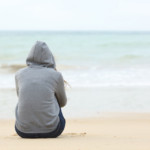
Geranium essential oil provides a wide range of applications and health benefits. Geranium oil can be used topically, aromatically, and internally. You can make your own peppermint oil in minutes using the Geranium oil produced by our essential oil distillation kits. Geranium essential oil extraction prepared at home has a wide range of health advantages and applications. Learn more about how to make rose geranium oil here.
Geranium essential oils are popularly used for massages, baths, yoga, and aromatherapy. Additionally, DIY Geranium oil aids in hormone balancing, stress relief, depression reduction, inflammation reduction, improved circulation, blood pressure reduction, and more.
When applying geranium oil or other homemade essential oils to your skin, make sure you use carrier oil. Carrier oils are used in conjunction with essential oil extraction to guarantee that the essential oils are administered to the skin in a comfortable manner. It dilutes the essential oil without diluting the oil’s efficacy. Avocado oil, grape seed oil, olive oil, almond oil, argan oil, and other types of carrier oils can be purchased and used with your produced geranium oil.
Making Essential Rose Geranium Oil
The process of making rose geranium essential oil is simple and requires little equipment. When you’re finished, you’ll have nice rose-scented oil that can be used for everything from treating skin issues to repelling ticks. The oil can be used to treat dry skin, acne, boils, and eczema when applied to the skin. Rose geranium oil provides a relaxing, non-sedative effect. Anxiety, sadness, menstrual cramps, and hot flashes have all been treated with it.
The leaves of the rose geranium plant are the most important component of essential rose geranium oil. Rose geraniums are actually a perennial plant, not a rose. The shrub’s leaves are pointy and have serrated edges. This shrub’s leaves should be collected. The more leaves you utilize, the more oil you will be able to produce.
Method
Step 1:
Finding a source of rose geranium leaves is the first step. Rose geraniums are frost tender and grow best in garden zones 9 and 10. They can be grown in containers, greenhouses, or purchased from wholesalers. When the volatile aromatics of the leaves are at their peak, the best leaves are gathered. This period begins just before the plant’s flower and ends when the flowers are half-opened. the harvesting should be done before the sun goes fully up, and after the dew has just fried.
Step 2:
Gather approximately 5 handfuls of rose geranium leaves. The leaves should be rinsed and dried. Remove any dirt or insects.
Step 3:
Fill a glass jar with roughly a fifth of the total amount of leaves you have and pour oil until the leaves are completely covered. This will require roughly 400 mL (1 3/4 cup) of oil. Because there is no scent to compete with the rose geranium essence, unscented carrier oils like sunflower and jojoba work well. Make sure all of the herbs are submerged with a wooden spoon. To combine the contents, close the jar and gently shake it.
Step 4:
Place the jar in a warm location for a week. On a warm day, the jar can be placed outside, but it should not be exposed to direct sunlight.
Step 5:
Fill another clean glass jar with the funnel. At least four layers of gauze or cheesecloth should be used to line the funnel. Pour the leaves and oil into the glass jar through the cheesecloth. It is critical to remove all leaves and plant particles from the oil. These will cause the oil to sour if left in. If particles pass through the gauze, re-filter the oil using a couple of layers of gauze or cheesecloth.
Step 6:
To make a stronger essential oil, more infusions of leaves and oil will be required. To do so, add another handful of leaves to the oil you produced earlier. With the wooden spoon, push the leaves under the surface of the oil, and if there isn’t enough oil to cover the leaves, add a small amount more oil. Steps 4 and 5 should be repeated. Carry on in this manner until all of the leaves have been used.
Step 7:
Strain into a beautiful bottle for the final filtering and seal firmly for storage.
Tip
To filter off light, keep essential oils in the shade or in a dark container. It’s better if you utilize it within a year.
Warning
To avoid masking the perfume of the rose geranium, use lightly scented or unscented oils like sunflower or jojoba oil. After the last filtering, be sure there are no particles of rose geranium plant matter left in the oil because they can degrade and destroy your essential oil. To ensure that all plant material has been filtered out, strain it many times at each step. Because a metallic ring can contaminate the oil, use a lid with a rubber ring liner.
- Easy Ways To Do Home Extensions and Additions - May 29, 2022
- Importance of Plumber While Kitchen Renovation - May 27, 2022
- Everything You Need To Know About Cosmetic Dentistry - April 22, 2022






